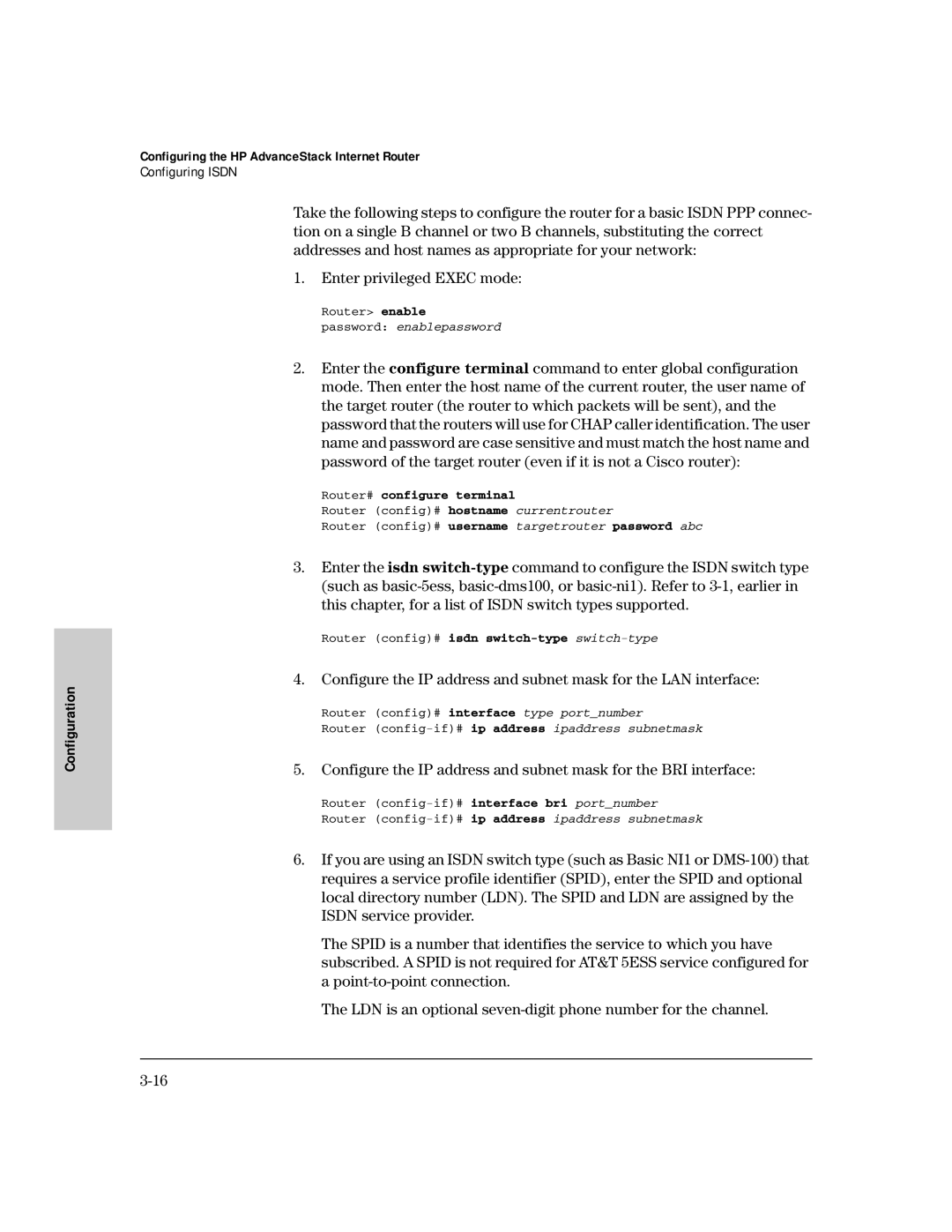
Configuration
Configuring the HP AdvanceStack Internet Router
Configuring ISDN
Take the following steps to configure the router for a basic ISDN PPP connec- tion on a single B channel or two B channels, substituting the correct addresses and host names as appropriate for your network:
1.Enter privileged EXEC mode:
Router> enable
password: enablepassword
2.Enter the configure terminal command to enter global configuration mode. Then enter the host name of the current router, the user name of the target router (the router to which packets will be sent), and the password that the routers will use for CHAP caller identification. The user name and password are case sensitive and must match the host name and password of the target router (even if it is not a Cisco router):
Router# configure terminal
Router (config)# hostname currentrouter
Router (config)# username targetrouter password abc
3.Enter the isdn
Router (config)# isdn
4.Configure the IP address and subnet mask for the LAN interface:
Router (config)# interface type port_number
Router
5.Configure the IP address and subnet mask for the BRI interface:
Router
Router
6.If you are using an ISDN switch type (such as Basic NI1 or
The SPID is a number that identifies the service to which you have subscribed. A SPID is not required for AT&T 5ESS service configured for a
The LDN is an optional
